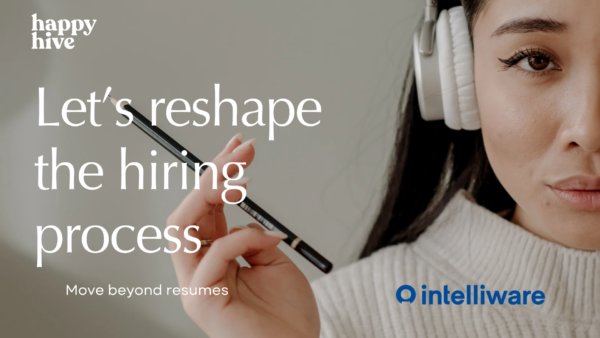The AI economy is proving that curiosity matters more than credentials. Business leaders estimate that 40% of their workforce will need to reskill in the next three years due to AI’s impact, a clear sign that static skill sets are being outpaced. New AI tools and techniques emerge so often that a team relying solely on past credentials will quickly fall behind.
Innovation also stalls when employees aren’t encouraged to question the status quo or learn new approaches. The greatest asset for success with AI is a curious, adaptable team. Organizations that prioritize continuous learning and welcome questions empower their people to adapt to technology shifts, foster responsible innovation, and deliver business results aligned with strategic goals.
Key Takeaways
- Credentials alone can’t keep pace with the rate of AI change—teams need curiosity and learning mindsets to stay effective.
- Organizations that reward curiosity create the conditions for faster adoption and safer application of emerging AI tools.
- A learning culture isn’t just a perk; it is essential infrastructure for scalable AI success and long-term retention.
- Curious, adaptable teams reduce risk and increase time-to-value by iterating faster and responding confidently to new developments.
- Businesses that prioritize continuous learning are better positioned to deliver responsible AI outcomes aligned with real-world goals..

A static skillset quickly becomes obsolete in the AI economy
AI capabilities advance at a relentless pace, rendering static skillsets obsolete far sooner than most expect. The concept of “skills half-life” is now a reality – the average tech skill loses half its value in under three years. A method or tool that was cutting-edge just a few years ago can be superseded by a new approach almost overnight. The recent rise of generative AI, for example, created a sudden need for entirely new skills that barely existed a year before.
Yet many organizations still place outsized weight on formal credentials, assuming a degree or certificate alone will keep their talent relevant for years. In practice, a diploma on the wall says little about whether someone’s knowledge is up to date. While 75% of companies are adopting AI, only 35% of their employees received any AI training in the last year. This mismatch leaves teams ill-equipped to use new AI tools effectively, highlighting the risk of relying on static expertise. Teams built solely on yesterday’s credentials struggle to fully apply today’s AI innovations, let alone tomorrow’s.
“Credentials alone can’t keep pace with the rate of AI change—teams need curiosity and learning mindsets to stay effective.”
Curiosity and continuous learning drive AI innovation
Encouraging curiosity and continuous learning isn’t just a feel-good measure. It serves as a catalyst for AI innovation. When people constantly explore new ideas and skills, they spot opportunities and improvements that others miss. This mindset creates a ripple effect that drives AI initiatives forward.
Curiosity sparks creative AI solutions
Curious employees tend to ask “what if” and “why not,” leading to fresh solutions. They challenge assumptions instead of accepting things as-is, which is vital when working with AI. This creativity shows up as novel applications of AI – one team might combine an AI forecasting tool with a new data source to solve a logistics bottleneck in an unconventional way. By connecting the dots across domains, inquisitive thinkers discover AI-powered improvements that a by-the-book approach could overlook.
Continuous learning drives constant experimentation
A team committed to continuous learning is always trying something new. Rather than sticking to familiar tools, they test emerging AI techniques in pilots and small projects. Failures aren’t seen as setbacks but as lessons, which speeds up the innovation process. Because everyone is in “learning mode,” they iterate quickly on solutions until they find an approach that delivers better results. In fact, 55% of organizations said that supporting continuous learning increases their ability to innovate. This kind of culture means new AI ideas are constantly being prototyped and refined, keeping the innovation pipeline flowing.
Adaptable teams seize new AI opportunities
Teams with a curiosity-first mindset don’t hesitate when a new AI opportunity arises – they jump on it. Whether it’s a promising machine learning library or an update to a cloud service, these teams are often first to explore how it can benefit the business. Staying informed allows them to integrate new tools faster and gain value sooner than slower-moving peers. They might be the ones piloting an AI-powered customer service chatbot or enhancing a product with an AI feature while others are still deliberating. Their habit of questioning also means they vet new AI solutions for risks and ethical issues early, helping to implement innovations responsibly. As a result, they often get new solutions to market ahead of industry peers, realizing efficiency gains while avoiding the pitfalls of unexamined technology.

A culture of curiosity builds adaptable AI teams
To reap these innovation benefits at scale, organizations need to cultivate a company-wide culture of curiosity. It’s not enough to have a few inquisitive individuals – the entire team should feel empowered to learn and adapt continuously. Building such a culture requires deliberate action from leadership down to daily practices.
- Encourage questions: Create an environment where employees at all levels can ask questions and challenge how things are done. Leaders should model this by welcoming “why?” and “what if?” discussions, signaling that curiosity is valued.
- Reward learning: Recognize and reward employees who invest in developing new skills or share knowledge with others. This could mean public kudos for completing an AI course or tying career advancement to skill growth.
- Give time to explore: Provide dedicated time and space for experimentation with new technologies. For instance, some companies allot a few hours each week for staff to tinker with emerging AI tools or pursue passion projects that could benefit the business
- Lead by example: Have managers and executives demonstrate their own curiosity. When leaders openly engage in training or experiment with new tech, it sends a clear message that continuous learning is part of the organization’s DNA.
- Cross-pollinate knowledge: Facilitate learning across different teams and disciplines. A data scientist teaching the sales team about AI, or a business analyst explaining market trends to the data team, can spark new ideas and break down silos.
- Make it safe to fail: Encourage smart experimentation by removing the fear of failure. If a new AI technique doesn’t pan out, treat it as a learning opportunity rather than a blunder. This psychological safety keeps people willing to try innovative approaches.
Building a learning culture not only makes teams more adaptable – it also improves engagement and retention. In one survey, 66% of workers said they would be more likely to stay with their employer if the company invested in upskilling them. Put simply, fostering curiosity and growth isn’t just good for innovation – it helps keep valuable talent on board. An organization that prizes curiosity is better prepared for the next AI trend, able to keep pace with technology instead of being left behind.
Curiosity-first teams deliver real AI results
Curiosity-first teams deliver tangible results with AI because they bridge the gap between technology and business value. With their habit of rapid learning, these teams implement new AI solutions sooner and more effectively, translating into faster time-to-value on projects. They constantly fine-tune processes using the latest AI capabilities, often increasing efficiency and quality in measurable ways. For example, a curious operations group might use a new machine learning tool to cut a workflow’s processing time in half, or a marketing team might boost conversion rates by quickly adopting an AI-powered analytics platform. These improvements directly impact the bottom line, turning AI investments into real returns rather than just experimental pilots.
Equally important, curiosity-first teams ensure that AI is used responsibly and in alignment with business goals. Because they question outputs and assumptions, they are more likely to catch errors or bias in AI systems before those issues become costly. This vigilance helps maintain compliance and trust – critical factors for AI in regulated sectors. And when market conditions or rules change, an adaptable team can pivot swiftly, retraining models or adjusting strategies without derailing progress. In essence, a culture of curiosity makes an organization more resilient: new opportunities are seized, risks are managed proactively, and AI initiatives consistently deliver value where it matters.
“A culture of curiosity makes an organization more resilient: new opportunities are seized, risks are managed proactively, and AI initiatives consistently deliver value where it matters.”

Electric Mind fosters curiosity-driven AI success
Curiosity-first teams truly deliver real AI results, and this principle is at the heart of Electric Mind’s approach. In each engagement, the firm works side by side with client stakeholders to cultivate a continuous learning mindset from day one. This co-creation model means clients aren’t just handed an AI solution. They also gain the internal capability to continually improve it. Its multidisciplinary team (spanning strategy through engineering) introduces new AI tools in a way that teams quickly grasp and build upon, accelerating adoption while upholding strong governance standards.
Backed by decades of engineering experience, its team approaches every AI project with pragmatism and a focus on measurable outcomes. Solutions are tailored to each organization’s context rather than one-size-fits-all playbooks, and every technology decision is mapped to a clear business KPI. By prioritizing transparency, compliance and bias mitigation, the firm builds the trust needed for AI initiatives to scale in regulated industries. The result is AI-powered innovation that moves fast but stays aligned with business goals, giving leaders tangible results and confidence in the face of continuous change.




.png)
.png)
.png)
